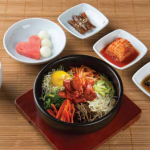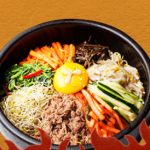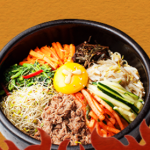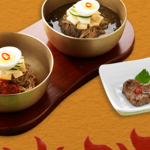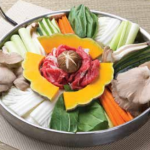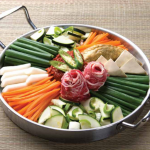Are you a food aficionado seeking to explore the diverse flavors of Korean cuisine? Look no further! Korean dishes are renowned for their delightful combination of spices, seasonings, and fresh ingredients. With a touch of Malay influence, these dishes become even more intriguing and tempting. Let’s dive into the key ingredients that make Korean cuisine so tantalizing.
Introduction to Korean Cuisine
Korean cuisine offers a harmonious blend of flavors, colors, and textures. Whether you are in Seoul or anywhere else in the world, Korean dishes offer a delightful culinary experience. From spicy and bold flavors to mild and comforting dishes, Korean food offers something for everyone.
Essential Ingredients for Korean Dishes
1. Gochujang (고추장) – Spicy Chili Paste
Gochujang is a fiery red chili paste made from fermented soybeans, glutinous rice, and red chili peppers. This essential ingredient adds a distinct flavor and spiciness to many Korean dishes like Bibimbap and Tteokbokki. With its rich umami taste, it brings a delightful kick to any dish it graces.
2. Kimchi (김치) – Fermented Vegetables
Kimchi, a traditional Korean side dish, is considered the heart of Korean cuisine. It is made by fermenting vegetables, including cabbage and radishes, with a blend of garlic, chili powder, and other seasonings. This tangy and spicy dish is loaded with probiotics, offering a multitude of health benefits.
3. Doenjang (된장) – Fermented Soybean Paste
Doenjang is a savory and fermented soybean paste that adds depth to Korean soups, stews, and sauces. It is made from soybeans, rice, and salt. This rich umami flavor enhancer is often used as a base ingredient in iconic dishes such as Doenjang Jjigae (soybean paste stew).
4. Sesame Oil (참기름)
Sesame oil is a common ingredient used in Korean cooking. With its nutty aroma, it enhances the overall flavor of various Korean dishes. From stir-fries to marinades, sesame oil adds a distinct taste that elevates the dish to another level.
5. Bulgogi (불고기) – Marinated Grilled Meat
Bulgogi is a popular Korean dish made from thinly sliced beef or pork marinated in a blend of soy sauce, sesame oil, garlic, and sugar. The tender and flavorful meat is then grilled to perfection, creating a delectable dish that will make your taste buds dance with joy.
The Beauty of Korean Cuisine
Korean cuisine proudly celebrates the balance of flavors and emphasis on fresh ingredients. From hearty stews like Sundubu Jjigae (soft tofu stew) to refreshing dishes like Bibim Naengmyeon (spicy cold noodles), each bite is an adventure for your palate.
FAQ Section
1. What is the difference between Kimchi and Gochujang?
Kimchi is a fermented vegetable side dish, while Gochujang is a spicy chili paste. Kimchi offers a tangy and crunchy experience, whereas Gochujang adds spiciness and depth to a dish.
2. How long does it take to ferment Kimchi?
The fermentation process of Kimchi usually takes around three to seven days, depending on various factors such as temperature and desired taste.
3. Can I substitute Gochujang with another chili paste?
While Gochujang has a unique flavor profile, you can substitute it with other chili pastes like Sambal Oelek, keeping in mind that the taste may differ.
4. Is Korean cuisine generally spicy?
While Korean cuisine is known for its spiciness, not all dishes are spicy. There are plenty of mild and comforting options available too.
5. What are some popular vegetarian Korean dishes?
Korean cuisine offers a variety of vegetarian options. Some popular vegetarian dishes include Bibimbap (mixed rice with vegetables), Japchae (stir-fried glass noodles with vegetables), and Kimbap (seaweed rice rolls).
Embark on a culinary expedition and savor the delightful taste of Korean cuisine. From the bold flavors of Gochujang to the refreshing crunch of Kimchi, each ingredient in Korean dishes contributes to an unparalleled dining experience. Dive into the world of Korean cuisine and uncover the secrets of its tempting flavors!
Stay tuned for more exciting articles on international cuisines and culinary adventures!
–Written by a food enthusiast with a love for Korean and Malay cuisine.


